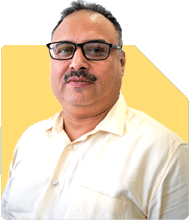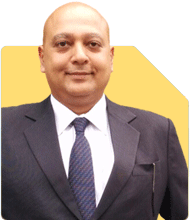Hi, I am 26 years unmarried girl earning 75k monthly with 4lacs gold, 1lakh PF , monthly 5k in LIC , I want to retire by 45 need investment advice
Ans: It's great to see you taking charge of your financial future. Your goal of retiring by 45 is achievable with a well-structured plan. Given your current assets and monthly income, let’s explore how you can work towards this goal effectively. I'll guide you through some investment strategies that align with your aspirations.
Understanding Your Current Financial Picture
You’re in a strong financial position with a monthly income of Rs 75,000. You also have Rs 4 lakhs in gold and Rs 1 lakh in your Provident Fund (PF). Additionally, you are contributing Rs 5,000 monthly to LIC. These are good starting points.
However, to retire early, we need to diversify and optimize your investments. Your current assets are stable but may not grow aggressively enough to meet your retirement goal. Let's delve into how you can enhance your investment strategy.
Building a Robust Investment Plan
Diversifying Beyond Traditional Assets
Gold and PF are stable, but not very high-growth. Your gold assets (Rs 4 lakhs) provide a safety net, and your PF offers a steady return. But to retire by 45, we need to aim for higher returns.
Start investing in mutual funds. They offer higher growth potential and are a key tool in building wealth.
Mutual Funds: The Power of Compounding
Mutual funds pool money from many investors to invest in securities. There are several types, each with different risk levels and growth potentials.
Equity mutual funds invest in stocks and are great for long-term growth. They come in various categories like large-cap, mid-cap, and small-cap funds.
Debt mutual funds are less risky and invest in bonds and other fixed-income instruments. They provide stable returns, though lower than equity funds.
Balanced or hybrid mutual funds combine equity and debt. They offer moderate risk and can be a good middle ground for conservative investors.
The power of compounding in mutual funds cannot be overstated. Reinvesting your returns means your investment grows exponentially over time. This is crucial for accumulating wealth by the time you reach 45.
Evaluating Actively Managed Funds
Actively managed funds are handled by professional fund managers who aim to outperform the market. This can lead to higher returns compared to index funds, which simply track market indices.
Although index funds are low-cost, they often underperform in volatile markets. Actively managed funds, though having higher fees, offer the potential for better returns due to strategic buying and selling by experienced managers.
Systematic Investment Plans (SIPs)
SIPs allow you to invest a fixed amount in mutual funds regularly, usually monthly. This approach is great for disciplined investing and reduces the impact of market volatility.
Starting SIPs with as little as Rs 5,000 to Rs 10,000 per month in a diversified portfolio of mutual funds can be a game-changer. It allows you to benefit from rupee cost averaging and the power of compounding.
Assessing Your LIC Investment
You mentioned a monthly contribution of Rs 5,000 to LIC. It's worth reviewing this investment. Traditional LIC policies often offer lower returns compared to other investment options.
Consider redirecting some or all of these contributions towards higher-growth investments like mutual funds. This can significantly enhance your retirement corpus.
Setting Up an Emergency Fund
Before diving deeper into investments, ensure you have an emergency fund. This should cover at least 6 to 12 months of your living expenses.
This fund should be easily accessible and can be kept in a high-interest savings account or a liquid mutual fund. An emergency fund protects you from financial disruptions and allows your investments to grow without interruptions.
Leveraging Tax-Advantaged Investments
Maximize your investments in tax-advantaged options like Equity Linked Savings Schemes (ELSS). ELSS funds not only provide tax benefits under Section 80C but also offer the potential for higher returns due to their equity exposure.
Additionally, take full advantage of your PF contributions, as they provide tax-free returns and are a safe, long-term investment.
Planning for Inflation
Inflation erodes the purchasing power of money over time. Your investment strategy must account for this. Equity investments, especially over the long term, have historically outpaced inflation.
When planning your retirement corpus, consider an annual inflation rate of around 6-7%. This ensures your retirement savings will maintain their value and support your lifestyle even years down the line.
Investing for Different Time Horizons
Your investments should align with your goals and time horizons. For long-term goals like retirement, focus on equity mutual funds. These funds can offer high returns and benefit from the long-term growth of the market.
For medium-term goals (5-10 years), balanced or hybrid funds are ideal. They provide growth while mitigating risk with a mix of equity and debt.
For short-term goals (less than 5 years), stick to debt funds or fixed deposits. These are lower risk and provide stable returns, ensuring your money is safe when you need it.
Reassessing and Rebalancing Your Portfolio
Regularly review your investment portfolio to ensure it aligns with your goals and risk tolerance. Market conditions and personal circumstances change, and so should your investment strategy.
Rebalancing your portfolio involves adjusting the asset allocation to maintain your desired level of risk. If your equity investments grow faster than your debt investments, for example, you may need to shift some money from equity to debt to keep your portfolio balanced.
Preparing for Healthcare Costs
Healthcare costs can be significant in retirement. Consider investing in health insurance to cover major medical expenses. This will protect your savings and ensure you have the financial resources to handle unexpected health issues.
Creating a Retirement Budget
Estimate your retirement expenses based on your current lifestyle and future aspirations. This includes daily living costs, healthcare, travel, and any other personal goals.
Creating a budget helps you understand how much you need to save and ensures you stay on track with your financial goals. It also allows you to adjust your savings and investments as needed.
Considering Professional Guidance
Working with a Certified Financial Planner (CFP) can be invaluable. A CFP can provide personalized advice and help you create a comprehensive financial plan.
They can guide you through complex investment decisions, tax planning, and retirement strategies, ensuring you stay on track to achieve your goal of retiring by 45.
Embracing Financial Discipline
Achieving early retirement requires financial discipline. Live within your means, avoid unnecessary debt, and regularly save and invest.
Automate your investments to ensure consistency and take advantage of market opportunities. Staying disciplined and focused on your goals will make early retirement a reality.
Final Insights
Retiring by 45 is an ambitious and exciting goal. With strategic planning and disciplined investing, you can achieve it.
Focus on building a diversified portfolio, leveraging the power of mutual funds, and consistently reviewing and adjusting your investments.
Stay committed to your financial goals and seek professional advice when needed. Your dedication today will pave the way for a comfortable and fulfilling retirement.
Best Regards,
K. Ramalingam, MBA, CFP,
Chief Financial Planner,
www.holisticinvestment.in










.jpg)














